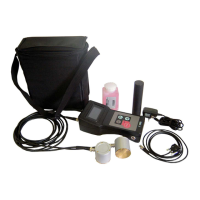
Do you have a question about the Controls 58-E4800 and is the answer not in the manual?
| Brand | Controls |
|---|---|
| Model | 58-E4800 |
| Category | Test Equipment |
| Language | English |
Explains symbols used in the manual for notes and warnings.
Lists changes made to the manual across different versions.
Details the meaning of specific icons and symbols employed in the manual.
Defines the correct applications and warns against misuse of the instrument.
Provides critical safety precautions and warnings for operating the equipment.
Outlines environmental considerations and proper disposal methods for the equipment.
Presents the conformity declaration for the equipment regarding European standards.
Locates and describes the equipment's identification plate with model and serial number.
Identifies and explains the function of each button, connector, and display element.
Lists the main technical characteristics and operating parameters of the instrument.
Details the procedure for recharging the instrument's internal batteries.
Guides the user through the setup and operational steps for taking measurements.
Explains different methods for positioning the transmitter and receiver probes on the sample.
Describes how to calculate pulse velocity based on path length and transit time.
Details how to assess concrete homogeneity using grid measurements and transit times.
Explains how to detect defects like cracks and voids based on pulse transit time anomalies.
Discusses the relationship between pulse velocity and concrete strength properties.
Outlines using the instrument to monitor concrete hardening for formwork removal.
Shows how to calculate the dynamic elastic modulus from measured ultrasonic wave velocity.
Provides a method and formula for calculating the depth of detected cracks.
Offers advice and best practices for optimal and accurate use of the instrument.
Explains how to connect an oscilloscope for waveform visualization and analysis.
Details the process of connecting the instrument to a computer for data transfer.
Describes how to activate the auto power-off function to conserve battery life.
Provides instructions on how to properly shut down the instrument.
Illustrates how to use the included flexible case and shoulder straps for portability.
Lists routine maintenance tasks to ensure the instrument's proper function and longevity.
Explains the procedure for verifying and recalibrating the instrument's accuracy.
Details the step-by-step process for safely replacing the instrument's batteries.
Provides solutions for common faults and issues encountered with the instrument.